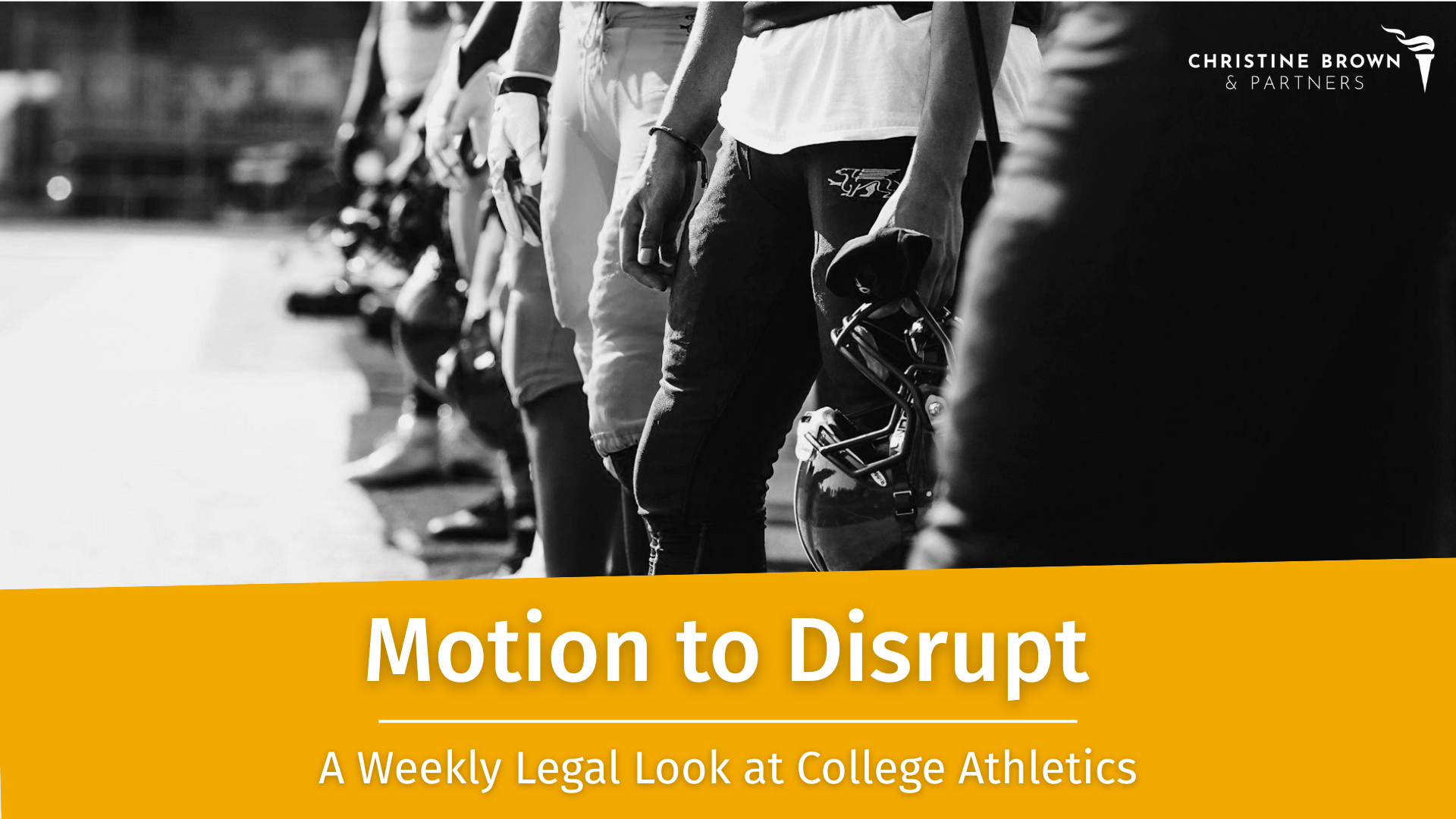Motion to Disrupt Vol. 9
50 Different Playbooks: The Legal Minefield of High School NIL
OPENING STATEMENTS
One of my clients is a high school athlete in Georgia which allows high school athletes to profit from their NIL. He has the freedom to capitalize on his talent and build his personal brand without fear of losing eligibility. But consider a young athlete in Texas or Michigan, where the same opportunity would result in an immediate suspension. That kind of disparity isn’t just frustrating, it’s a legal minefield.
NIL reshaped college sports almost overnight. Now, that same wave is touching high schools but it’s arriving with a fractured and confusing legal landscape. Roughly 40 states allow some form of NIL activity for high schoolers. About 10 either restrict or outright ban it. And among the states that do allow it, the rules vary widely – endorsement limits, disclosure requirements, and eligibility penalties differ from district to district, and often, school to school.
For families, athletes, and even coaches, this patchwork of policies creates a legal maze with real consequences.
Take Faizon Brandon, a top football recruit in the 2026 class, from North Carolina. Last year, he was blocked from signing an NIL deal simply because he attended a public high school, while private school athletes in the same state could profit. His mother sued, arguing the policy violated Faizon’s constitutional rights to free speech and contract. The court agreed, issuing a preliminary injunction that forced the State Board of Education to allow NIL activity for public high school athletes immediately. This ruling did more than help one athlete, it reset the rules statewide.
While Brandon is part of the 1% of high school athletes who have signed NIL deals, the potential impact is enormous, with over 8 million high school athletes nationwide. Some of the ripple effects I foresee include:
More lawsuits. Legal ambiguity is a breeding ground for litigation. Conflicting policies aren’t just expensive for school systems, they cost young athletes and their families time, opportunity, and financial resources.
Athlete migration. We could see top talents moving or being recruited to states with friendly NIL laws, disrupting competitive balance. This brings up knotty legal questions, especially since recruiting at the high school level is largely prohibited to keep things fair and prevent unethical practices. When NIL deals become recruitment incentives, it can lead to investigations and sanctions not just for athletes, but for schools and third parties involved.
Uneven playing field. We’re already seeing some well-funded school districts implement NIL consultants, workshops, or staff dedicated to helping athletes navigate deals. Meanwhile, families in underserved areas are left to navigate these waters alone – often without legal counsel, business guidance, or protection from bad actors. That’s a recipe for exploitation. Too often, I see young athletes signing deals that include exclusivity clauses that block future opportunities, perpetual usage rights that give brands control over their NIL forever, or one-sided termination clauses that offer athletes little recourse. Without legal oversight, these pitfalls are likely to grow and widen the inequality gap.
Punitive enforcement for honest mistakes. Poorly communicated rules and unclear reporting systems can turn innocent missteps into serious penalties. An athlete who fails to report a $250 Instagram deal – not out of malice, but because no one explained the process – can lose eligibility and opportunity.
As it stands, NIL isn’t just a new frontier for high school athletes, it’s a legal trapdoor. Without a clear, uniform framework, we're forcing young athletes and their families to navigate a high-stakes system with shifting rules and uneven protections. Until lawmakers step in with standardized, student-centered legislation, the risks – legal, financial, and personal – will continue to outweigh the rewards.
EXHIBIT A
Last week, I discussed the types of Title IX claims likely to emerge as revenue-sharing takes shape and referenced the class action lawsuit against Stephen F. Austin. Since then, a federal judge has issued a temporary injunction ordering the university to reinstate its women’s beach volleyball, bowling, and golf teams. The ruling sends a clear message: gender equity cannot be sidelined to fund new revenue-sharing models or scholarships permitted under the House v. NCAA settlement.
As the plaintiff’s attorney put it: "The funding of those revenue-sharing payments for football players and men's basketball absolutely cannot come at the expense of women's sports. Whatever you have to do to figure out how you're going to fund your revenue-sharing payments, it's not going to come at the expense of women's opportunities to participate in sports.”
EXHIBIT B
As I wrote a few weeks ago, the question isn’t if college athletes will collectively bargain, it’s when. And a five-hour meeting earlier this week between Athletes.org and 23 GMs from Power Four schools only reinforced that momentum.
All 23 GMs “agreed in unison that [collective bargaining] is the best pathway forward for college sports.” The group reached consensus on several key points: eliminating the in-season transfer portal window, supporting performance-based incentives, and creating a formal agent certification process and registry.
Still, there are differing views on how to actually build the model, and who drives it, but the wheels are in motion.
ON THE DOCKET
While college football and basketball playoff expansion won’t happen this year, it’s only a matter of time. That raises an important question: what protections are in place for the athletes? Longer seasons bring increased risk of injury, greater physical and mental strain, and more time away from academics – often without any added healthcare, insurance, or recovery support. If the season is going to stretch, athlete protections need to stretch with it. How that balance is struck will be critical.
FOOTNOTES
81%.
The number of Americans who erroneously think that the U.S. government provides funding for Team USA development programs (via Knight Commission & Elon University).

